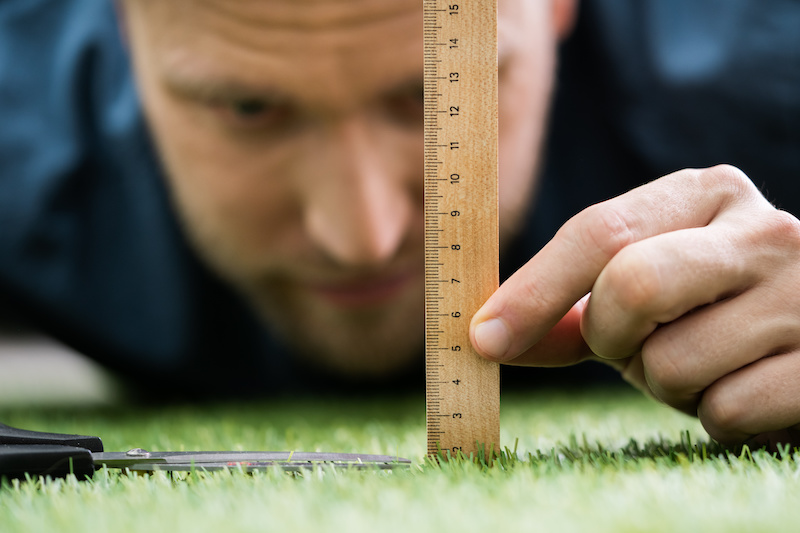Summer is finally here, and it’s the time when we want our lawns to look their best. However, it’s also the time that lawns undergo the most stress. No rain and hot temperatures threaten to burn our carefully manicured, lush, green lawns. Warm weather can also cause insect and disease issues to arise. Combined, all of these factors can leave our once-green lawns looking brown and dry. The good news is, you don’t have to slave over your lawn to keep it healthy. In fact, to a great extent, it’s not the amount of work you put into your lawn — it’s when and how you do it.
1. MAKE SURE YOUR MOWER BLADE IS SHARP
A well-maintained, sharp, and balanced blade cuts grass cleanly and evenly. A dull one tears grass instead of cutting it cleanly. Damaged grass turns yellow, requires more water and nutrients to recover, and is more susceptible to disease. Sharpening and balancing a blade three times a year is usually enough to maintain a good cutting edge.
2. A FEW GOOD SOAKINGS ARE BETTER THAN LOTS OF LIGHT SPRINKLINGS
Deep watering helps develop deep roots that tap into subsurface water supplies. Light sprinklings moisten only the grass and surface of the soil, encouraging shallow root growth and increasing the need for more frequent watering. Lawns generally require one to two inches of water per week from you or Mother Nature, applied at three or four-day intervals. But this varies drastically depending on the temperature, type of grass, and soil conditions. Lawns in sandy soils may need twice as much water since they drain quickly. Lawns in slow-draining clay soils may need only half as much. Do not water at night, as the grass will not be able to absorb and make use of the water. In addition, the increased dampness could lead to the development of diseases. Also, do not water if it is raining.
3. FEED YOUR LAWN
Your lawn needs food to stay healthy. Applying a slow-release fertilizer provides a source of nutrients and helps protect the turf from getting burned. It takes about six to eight weeks for the microbes in the soil to process nutrients. That means it’s important to fertilize your lawn at regular intervals. Replenishing nutrients on a regular basis will help the grass to grow thick, which helps to crowd out weeds and keep the soil cool.
4. AERATE YOUR LAWN
Your lawn needs to be able to “breathe.” Plus, aerated lawns will be better able to absorb water, which will lessen the occurrence of runoff. A simple and economical way to aerate is to use a garden fork. Push the garden fork into the ground at approximately one-foot intervals. If you have a really large lawn, you could rent an aerator to make the job easier.
One of the best things that we did a few years ago was to invest in an irrigation system. We set the start time early in the morning, and it does six areas of our garden, including all our hanging baskets. We have the grass areas set at about 45 minutes every two days.


Leave a Reply